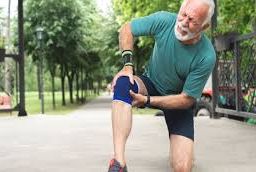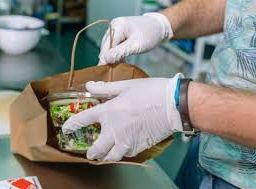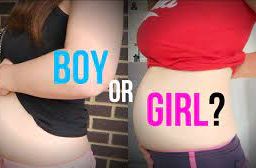
Centipede Bite Treatment – Relief and Recovery Tips
Centipedes, those many-legged creatures, are a common sight in many homes and gardens. While they usually go about their business without bothering us, sometimes, a centipede bite can happen. Whether it’s curiosity or sheer bad luck, knowing how to deal with a centipede bite is important for your health and well-being. In this post, we’ll cover what everyone should know about centipede bites, their symptoms, and how to manage them.
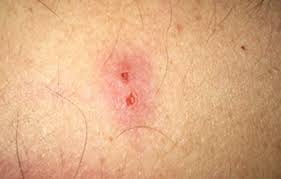
What Are Centipedes? Centipedes are elongated, arthropod creatures belonging to the class Chilopoda. They are not insects but are distant relatives of insects and share a common ancestor with them. Centipedes are known for their distinctive appearance and segmented bodies.
Physical Characteristics:
- Long and Slender: Centipedes typically have a long and slender body, which is composed of numerous segments, each housing a pair of legs.
- Segmentation: The body is divided into a series of segments, with each segment having one pair of legs. The number of segments and legs can vary among species but generally ranges from 15 to 191 pairs of legs.
- Coloration: Centipede coloration varies widely, but they are often brown, reddish-brown, or gray. Some species may exhibit bright coloration, serving as a warning to potential predators.
- Antennae: They possess a pair of long, slender antennae on their head, which are used for sensing their environment.
- Mandibles: Centipedes have powerful mandibles, which are adapted for capturing and immobilizing their prey.
- Venomous Fangs: Most centipede species have venomous fangs located on the first segment behind the head. These fangs are used to inject venom into their prey, which helps immobilize or kill it.
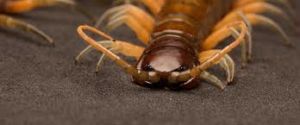
Habitats and Behaviors: Centipedes can be found in a variety of habitats around the world, but they prefer damp and dark environments. Their specific behaviors and lifestyles can vary, but here are some general characteristics:
- Nocturnal: Many centipede species are nocturnal, meaning they are most active during the night. They hide in dark, moist places during the day.
- Predators: Centipedes are carnivorous and feed on a diet primarily consisting of insects, spiders, and other small invertebrates. They are skilled hunters and use their venom to incapacitate their prey.
- Solitary: Centipedes are generally solitary creatures, and they tend to be territorial. They may display aggressive behavior if they encounter another centipede in their territory.
- Burrowers: Some species of centipedes are burrowers, while others are surface dwellers. Burrowing species create tunnels in the soil or under logs, rocks, or debris.
- Moisture-Seeking: Centipedes are sensitive to desiccation (drying out), so they are often found in moist environments like leaf litter, under rocks, in rotting wood, and in gardens.
Common Species: There are over 8,000 species of centipedes worldwide, and their characteristics can vary significantly. Some of the more commonly encountered centipede species include:
- House Centipede (Scutigera coleoptrata): Often found in homes, these centipedes are long and have distinctive legs, making them easily recognizable.
- Giant Desert Centipede (Scolopendra heros): Found in arid regions of North America, this species can be quite large and has a potent venomous bite.
- Tiger Centipede (Scolopendra polymorpha): Known for its striking coloration, this species is found in North and Central America.
- Stone Centipede (Lithobiomorpha): These centipedes are typically found outdoors under rocks and logs and are relatively small in size.
How and Why Centipedes Bite:
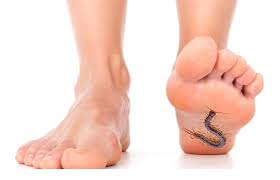
Centipedes bite as a means of defense and to immobilize their prey for feeding. Here’s an explanation of how and why centipedes bite:
- Defense Mechanism: Centipedes primarily bite to defend themselves when they feel threatened. Common situations include when a person accidentally comes into contact with a centipede, tries to handle it, or attempts to remove it from a hiding place. They use their sharp, venomous fangs to deter potential predators or perceived threats. When agitated or cornered, centipedes may bite as a last resort to protect themselves.
- Predatory Behavior: Centipedes are carnivorous predators, and they use their bites to capture and immobilize their prey. Although they primarily prey on insects and small invertebrates, they can bite humans if they mistake a finger or hand for prey. When hunting, centipedes will inject venom into their prey using their fangs to paralyze or kill it. Once the prey is immobilized, the centipede can then consume it.
- Accidental Encounters: Some centipede species are known to enter homes, and accidental encounters can lead to bites. House centipedes, for example, may be found in basements, bathrooms, or other dark, damp areas.
- Handling or Disturbance: Bites can occur when individuals attempt to handle centipedes or provoke them in some way. It’s essential to be cautious when dealing with centipedes, as they may respond defensively.
Anatomy of Centipede Fangs and Venom Glands:
Centipedes have specialized anatomical features for delivering venom through their bites:
- Fangs: Centipedes have a pair of hollow, venomous fangs that are located on the first body segment behind their head. These fangs are known as maxillipeds and are modified leg-like structures. The fangs are sharp and curved, allowing the centipede to deliver venom effectively when biting.
- Venom Glands: Centipedes possess venom glands that produce and store venom. When a centipede bites, it forcefully injects venom from its venom glands through the hollow fangs and into the wound it creates. The venom is a mixture of enzymes and toxins that serve to immobilize or kill prey and, in some cases, deter potential threats.
Understanding Centipede Bites:
Centipedes, despite their somewhat intimidating appearance, are not generally dangerous to humans. However, they do have a set of sharp pincers near their mouths, which can deliver a painful bite. Most centipede bites are not venomous and resemble bee stings in terms of symptoms and pain. It’s important to differentiate between a common centipede bite and a venomous one, which is quite rare and may require medical attention.

Common Symptoms of a Centipede Bite:
- Pain: The bite can be quite painful and may feel like a sharp, burning sensation. The pain can vary depending on the individual’s sensitivity and the centipede’s size.
- Swelling: The affected area may become swollen and reddened. This is a common reaction to the centipede’s bite.
- Itching: Itchiness around the bite area is a common symptom and can be bothersome.
- Localized Reaction: In most cases, the symptoms are localized to the bite site and do not spread throughout the body.
Managing a Centipede Bite:
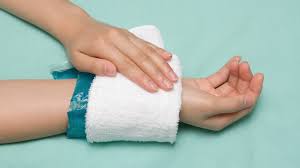
If you or someone you know is bitten by a centipede, here are some steps to manage the situation:
- Clean the Wound: Wash the bite area gently with soap and water to prevent infection.
- Apply Cold Compress: Use a cold compress or ice pack wrapped in a cloth to reduce pain, swelling, and itching.
- Pain Relief: Over-the-counter pain relievers, such as ibuprofen or acetaminophen, can help alleviate pain and discomfort.
- Elevate the Affected Area: If the bite is on a limb, elevate it to reduce swelling.
- Seek Medical Attention: If the symptoms persist or worsen, or if you suspect the centipede may have been venomous, seek immediate medical attention.
Preventing Centipede Bites:
How to Avoid Centipede Encounters:
Centipedes are generally harmless but can be startling when encountered. Prevention is the best approach. Here are some tips to keep centipedes away from your home:
- Seal Entry Points:
- Inspect your home for cracks, gaps, and holes in doors, windows, and walls. Ensure windows and doors are sealed properly to prevent centipedes from entering.
- Dehumidify Indoor Spaces:
- Centipedes are attracted to moisture. Use dehumidifiers in damp areas of your home, such as basements and bathrooms, to reduce humidity levels. Fix any leaks and keep basements and crawl spaces dry.
- Remove Outdoor Debris:
- Clear debris, like rotting leaves, woodpiles, and organic matter, from around the exterior of your home. This eliminates potential hiding spots for centipedes.
- Keep Outdoor Lights Off:
- Outdoor lighting can attract insects, which, in turn, can attract centipedes. Try to keep outdoor lights off when not needed.
- Regular Cleaning:
- Regularly clean and vacuum your home, especially in areas where centipedes might hide, like basements, closets, and crawl spaces.
- Minimize Clutter:
- Reducing clutter in your home can reduce hiding spots for centipedes. Organize and declutter storage areas.
- Proper Drainage:
- Ensure that your home’s drainage systems, including gutters and downspouts, are working correctly to prevent excess moisture around the foundation.
- Reduce Insect Presence: Since centipedes feed on other insects, control other pest populations in your home.

Pest Control and Minimizing Infestations:
To minimize centipede infestations in your home, consider the following pest control measures:
- Use Insect Traps: Place sticky traps or insect traps in areas where centipedes are commonly found. These traps can capture centipedes and other pests.
- Natural Predators: Encourage natural predators of centipedes, such as birds and certain insects, by providing birdhouses or maintaining a garden that attracts beneficial insects.
- Chemical Control: In severe infestation cases, you may consider contacting a pest control professional who can apply appropriate pesticides or insecticides to control centipedes.
Protective Measures:
When you are in areas where centipedes might be encountered, consider the following protective measures:
- Wear Appropriate Clothing: If you are working in areas where centipedes are present, wear long-sleeved shirts, long pants, and gloves to minimize skin exposure.
- Use Closed-Toe Shoes: Wear closed-toe shoes or boots, especially when walking in outdoor areas where centipedes could be hiding.
- Be Cautious: When moving debris, rocks, or wood, be cautious and use a stick or tool to gently inspect potential hiding spots before reaching in with your hands.
Here are some common myths about centipede bites, along with the correct information:
Myth 1: Centipedes are Highly Venomous and Deadly to Humans.
- While centipedes do possess venom and can deliver painful bites, the majority of centipede species are not dangerous to humans. Their venom is primarily designed to immobilize or kill their prey, which is typically small insects and invertebrates.
Myth 2: Centipede Bites Always Cause Severe Allergic Reactions.
- While centipede bites can be painful and result in localized swelling, they generally do not lead to severe allergic reactions in most people. Anaphylactic reactions to centipede bites are extremely rare.
Myth 3: Centipedes Lay Eggs Under Human Skin After Biting.
- Centipedes do not lay eggs under human skin after biting. This is a common misconception and a pure myth. Their eggs are typically laid in suitable environments to hatch and develop.
Myth 4: All Centipedes Bite in Self-Defense.
- While centipedes may bite in self-defense, they primarily use their bites for capturing and immobilizing prey when hunting. Not all centipedes will bite when threatened, and they usually prefer to escape rather than engage in a confrontation.
Myth 5: Centipede Bites are Always Extremely Painful.
- While centipede bites can indeed be painful, the level of pain experienced can vary depending on the species and the individual’s sensitivity. Some bites may be mildly uncomfortable, while others can be more painful. In most cases, the pain is localized and subsides over time.
Myth 6: The Best Way to Treat a Centipede Bite is to Squeeze Out the Venom.
- Squeezing the bite area to remove venom is not an effective or recommended treatment for centipede bites. Instead, the first-aid measures typically involve cleaning the wound, applying a cold compress, and keeping the area clean to prevent infection.
Myth 7: Centipede Bites Always Lead to Infection.
- While any wound, including centipede bites, can potentially become infected if not properly cared for, centipede bites do not inherently lead to infections. Proper wound care and hygiene can help prevent infection.
Consulting a doctor is crucial in specific situations related to centipede bites, as some cases may require medical attention. Here are situations where seeking medical help is necessary:
- Severe Allergic Reactions:
- If an individual experiences a severe allergic reaction (anaphylaxis) following a centipede bite, immediate medical attention is essential. Symptoms of anaphylaxis can include difficulty breathing, swelling of the face and throat, hives, rapid heartbeat, and a drop in blood pressure. Anaphylaxis is a life-threatening condition and requires prompt intervention with epinephrine and other medical treatment.
- Infection:
- Any wound, including centipede bites, can potentially become infected if not properly cared for. Signs of infection may include increased redness, warmth, swelling, pus, or worsening pain at the bite site. If these signs develop, it’s important to consult a doctor. Infections may require antibiotics or other medical interventions.
- Secondary Skin Reactions:
- In some cases, centipede bites can lead to secondary skin reactions, such as blisters, ulceration, or necrotic tissue (tissue death). These severe skin reactions can be painful and require medical evaluation and treatment.
- Severe Pain and Discomfort:
- While centipede bites can be painful, if the pain is severe, unrelenting, or affecting a large area of the body, it’s advisable to consult a doctor. They can provide pain management and assess the need for any additional treatment.
Potential Long-Term Complications:
Although centipede bites are generally not associated with long-term complications, there are some factors to consider:
- Scarring: Depending on the severity of the bite and the individual’s healing process, centipede bites can leave scars. Proper wound care can help minimize scarring.
- Psychological Impact: Some people may experience anxiety or fear related to centipede encounters or bites. If this fear becomes overwhelming or interferes with daily life, consulting a mental health professional for support and coping strategies can be beneficial.
Centipede bites are generally more of a nuisance than a severe health concern. Knowing how to manage them can provide relief from the discomfort they cause. However, it’s essential to be cautious and seek medical attention if you suspect a venomous bite or if symptoms persist or worsen. Prevention is key, so take steps to keep these critters away from your living space. Remember, while centipedes might be a bit creepy, they’re usually harmless creatures.
Disclaimer: This blog post is for informational purposes only and is not a substitute for professional medical advice or treatment. Always consult with a healthcare provider for any health concerns or questions.



